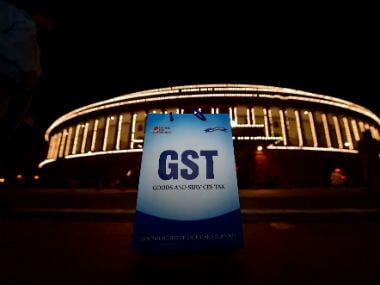Five structural reforms govt must bring to clear the way for GST bandwagon; tax framework is too control-oriented
Taxes are essential to govern the country but their collection should be conducted without causing disruption to the business which drives tax. A good indirect tax fiscal system should be clear and comprehensive in scope of levy, should allow a seamless flow of input tax credit and have minimal tax tiers. Further, it should be supported by simple compliance system and efficient validation infrastructure.
With an intention to offer a good and simple indirect tax system, GST was introduced in India. The strenuous efforts of the government in removing roadblocks for introducing GST are laudable. However, this was not accomplished without compromise. The government had agreed for some trade-offs for getting all states on board which have prevented GST legislation from being perfect. The present GST framework requires following structural reforms which will help bridge the gap between a good fiscal system and the present GST system.
Scope of levy
Products such as petrol, diesel and electricity continue to be taxed as per old laws. Same is the case with land and buildings. This causes two-fold problems: a) credit of GST charged on goods and services used in the supply of these products is not available for set-off against outward tax liability, b) credit of tax charged on these products under old laws is not available for set-off against GST. Some of these products constitute a significant portion of inputs for the industry. It is important to bring these products under the GST net to enable a seamless flow of credit.

Representational image. PTI
Credit base
Credit base should be as wide as the scope of levy, but for minimal exclusions, such as credit on goods and services used for personal consumption. As compared to the previous regime, the scope of credit has been widened in GST. However, credit of works-contract services when used for the construction of building and civil structures, telecommunication towers and pipelines laid outside factory premises, continues to remain blocked. This is an impediment to the Make in India initiative of the government under which organisations will need to establish factories and offices in India for business. Therefore, credit base needs to be widened. If the credit pertains to a business expenditure, it should be allowed.
Tax rate rationalisation
One of the cornerstones of GST was minimal tier tax rate structure. Conversely, there are 5 regular tax slabs (0 percent, 5 percent, 12 percent, 18 percent & 28 percent) and a few special tax rates (e.g.3 percent on gold, 0.25 percent on precious stones). This is in addition to exempted and zero-rated supplies. These multiple tax slabs have resulted in a complex rate structure which is being perceived negatively in the domestic and international market. There is an urgent need to simplify the tax rate structure.
Compliance burden
A good tax compliance system enables a smooth exchange of information between taxpayer and regulator without causing hardship on the business. However, the Indian GST compliance framework is designed to act more as a watchdog than as a facilitator of information. Firstly, there is an invoice level, system-driven, validation of information filed by supplier and receiver enabled through multiple monthly returns. Secondly, a registered person is also required to get his accounts audited. This stringent compliance system negates the government’s own initiative of ease of doing business. India needs a simple and robust compliance infrastructure to allow businesses to focus on growth.
Effective administration
For administration, taxpayers are divided between Centre and states based on stratified random sampling carried out through the IT system. There is a possibility that revenue officers who have handled only taxation of goods ( production or sale ) throughout their tenure, will be tasked with the taxation of services and vice versa. This is a potential concern as there is a significant conceptual difference in taxation of goods and that of services. In order to manage taxpayers in an effective manner, all assessing / auditing/ investing groups whether states or centre should comprise of at least one officer who is well versed with the taxation of services and another who is adept with the taxation of goods ( production or sale ) and Customs . In other words all such group ( whether state or centre)should include officers having knowledge on , service tax , excise, vat and customs.
Independent India has witnessed two major economic reforms; first, the economic liberalisation in the year 1991, and then the introduction of GST in 2017. Economic liberalisation has been credited in propelling India towards unprecedented growth rates. It is touted as the most successful economic reform in the history of the country.
The above recipe is relevant even today. The present GST framework is too control-oriented, which has also resulted in a complex compliance system. The need of the hour is to introduce reforms which will provide autonomy to taxpayers and present them with a good and simple tax system, in the true sense. This will help them reap the intended benefits of GST. A faulty execution will eclipse the good intention and commendable efforts of the government in bringing GST. The last thing the present government would want before the 2019 general elections is a negative sentiment out of its prime endeavour. GST is already the biggest economic reform; however, its success rests upon apposite execution.
No comments:
Post a Comment
Note: only a member of this blog may post a comment.